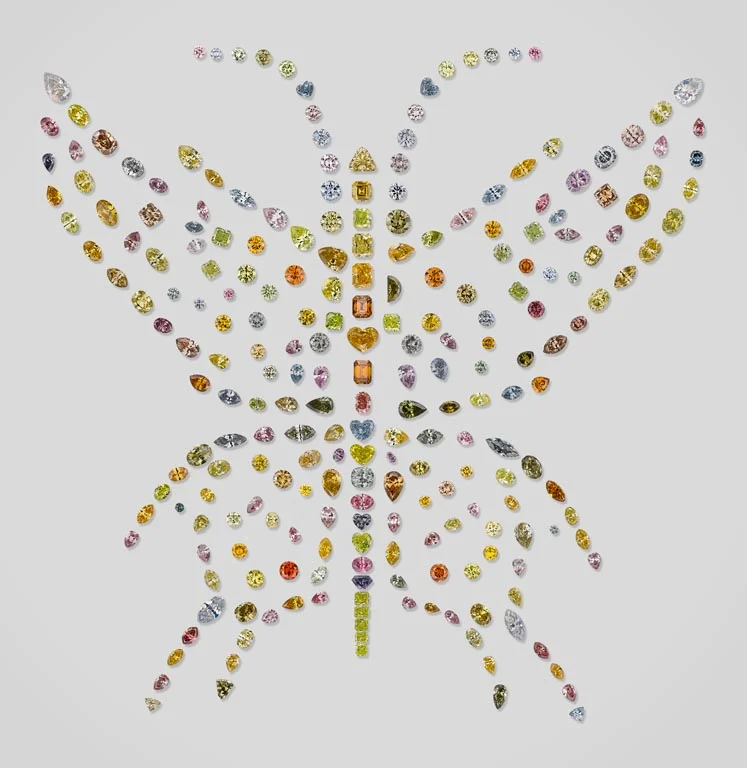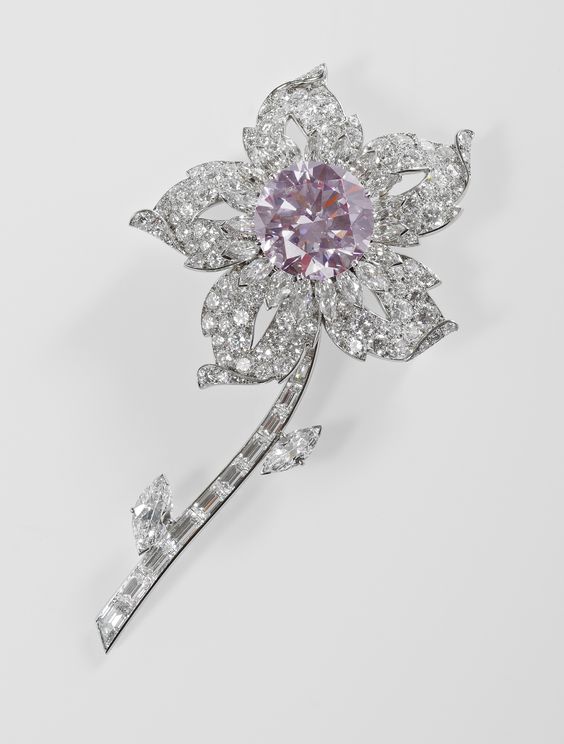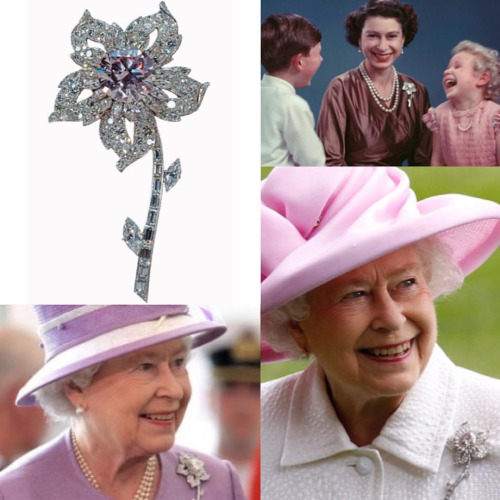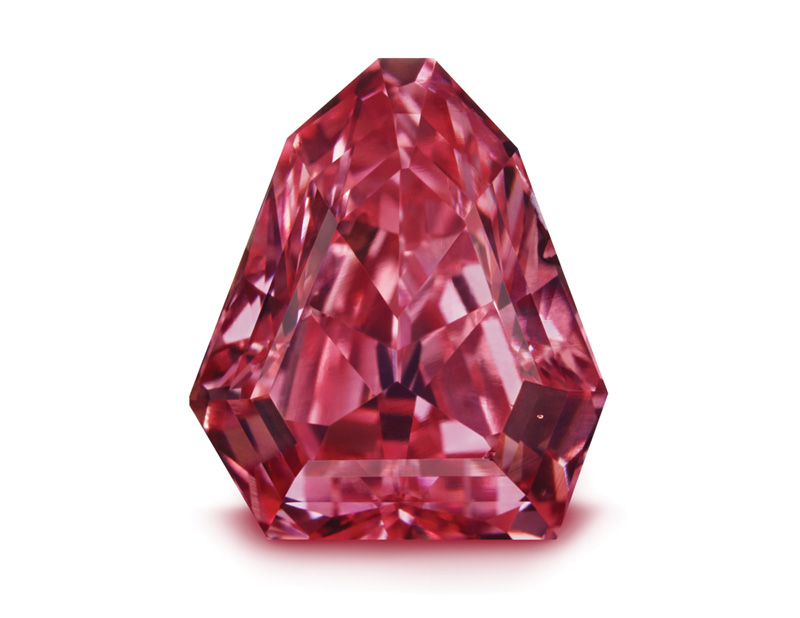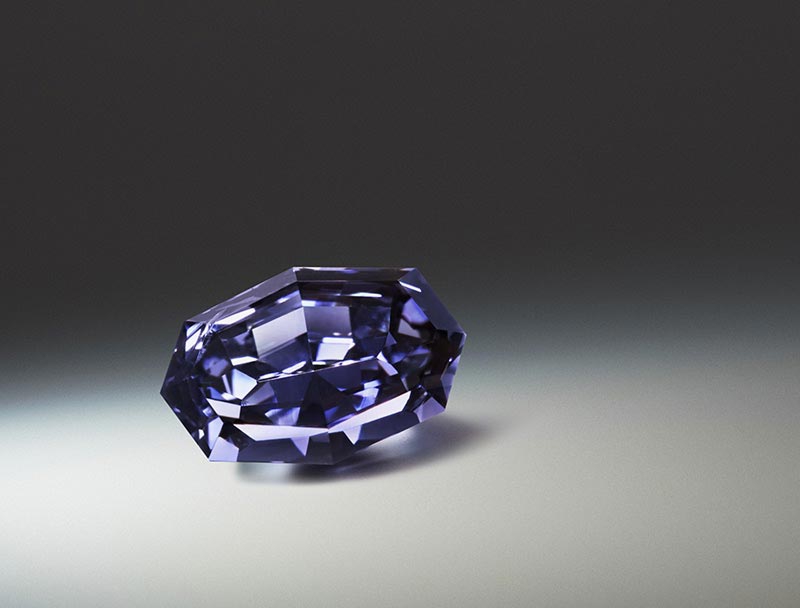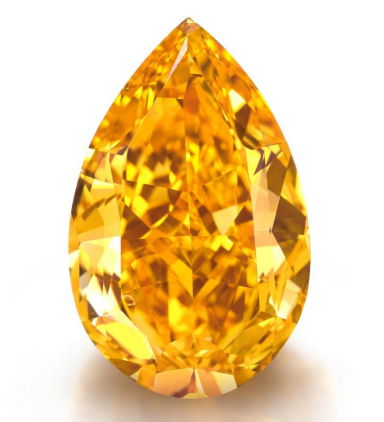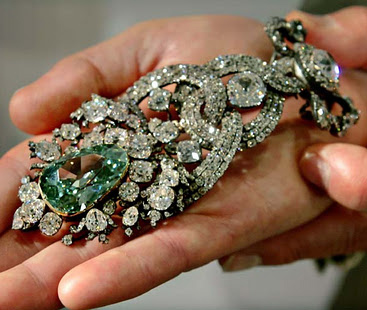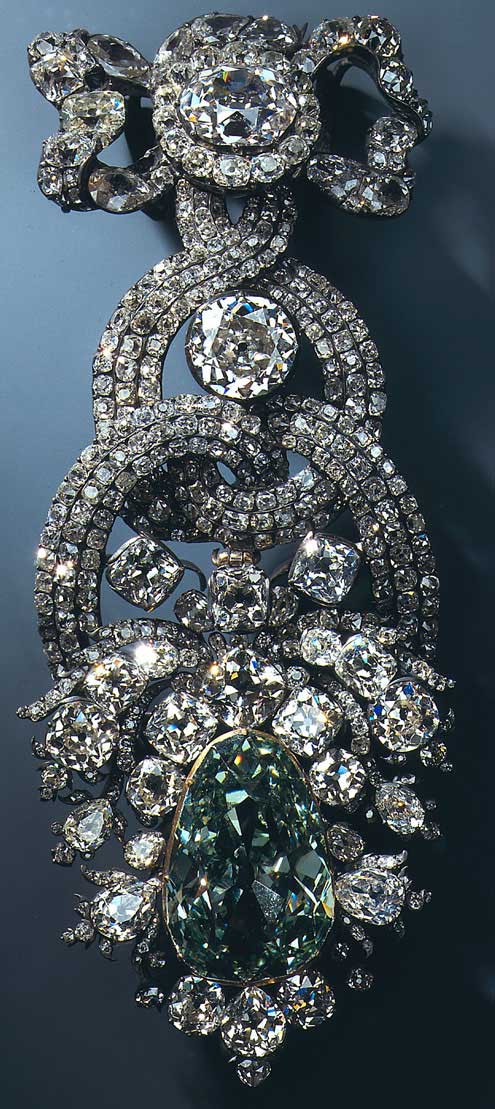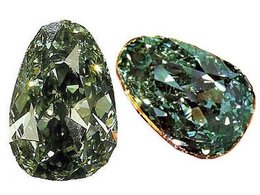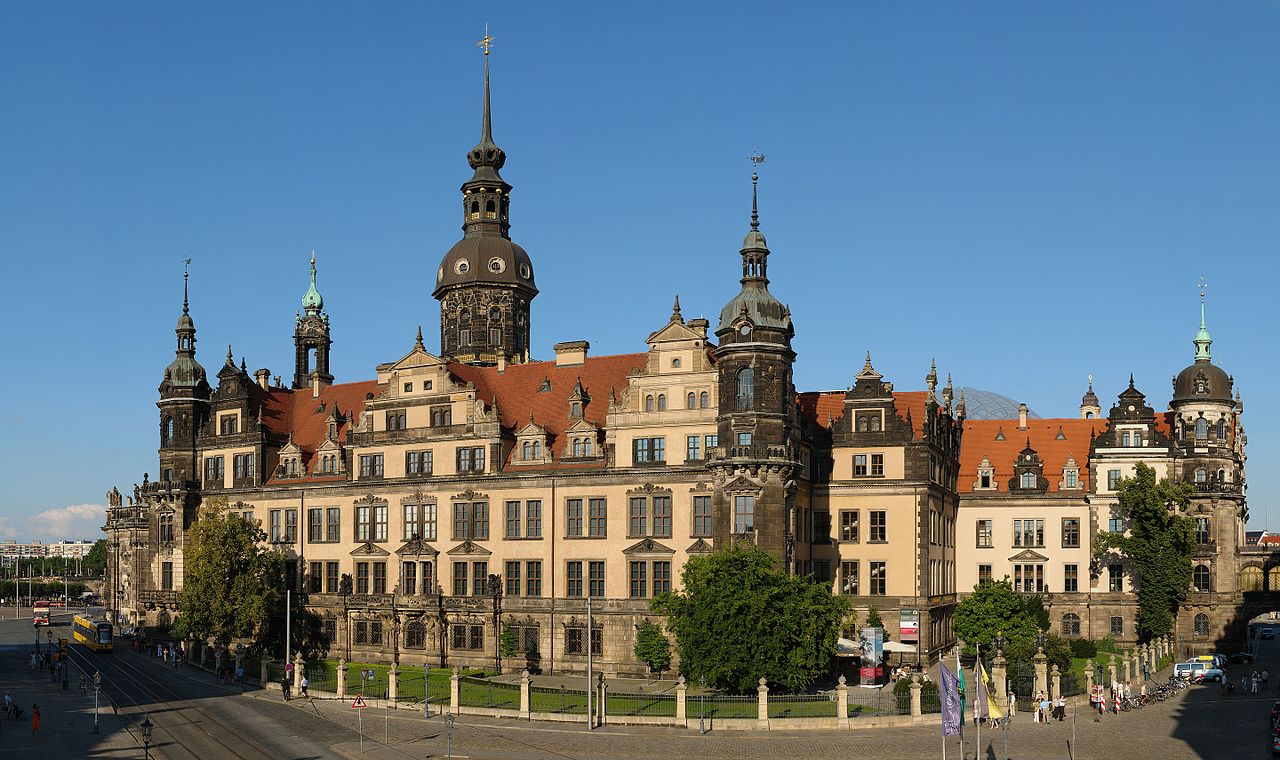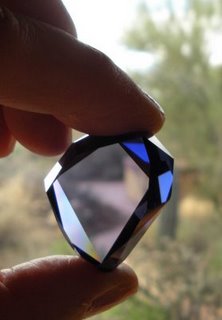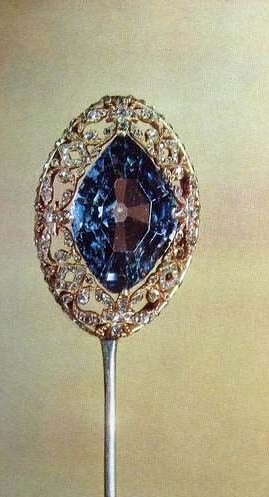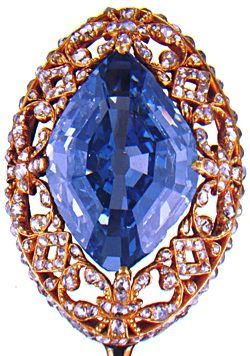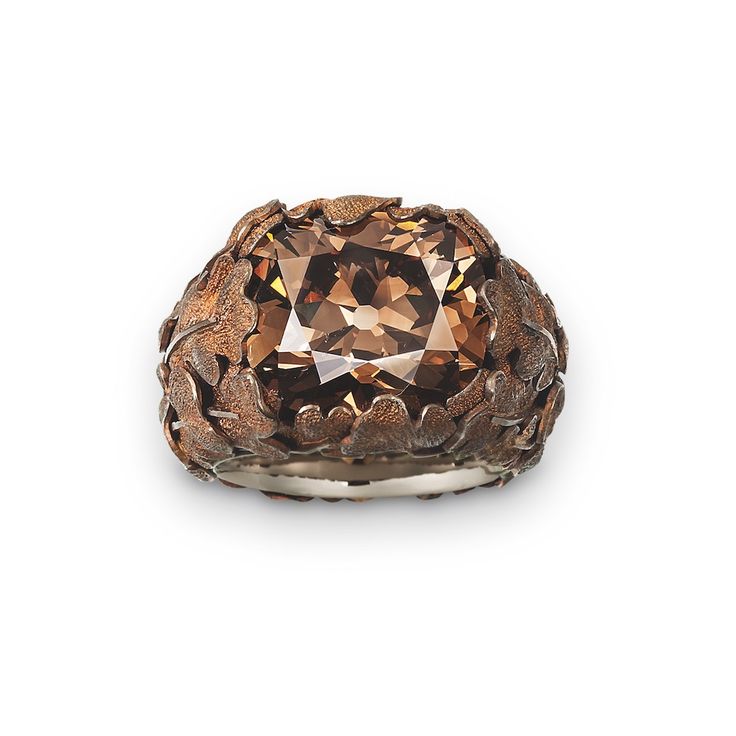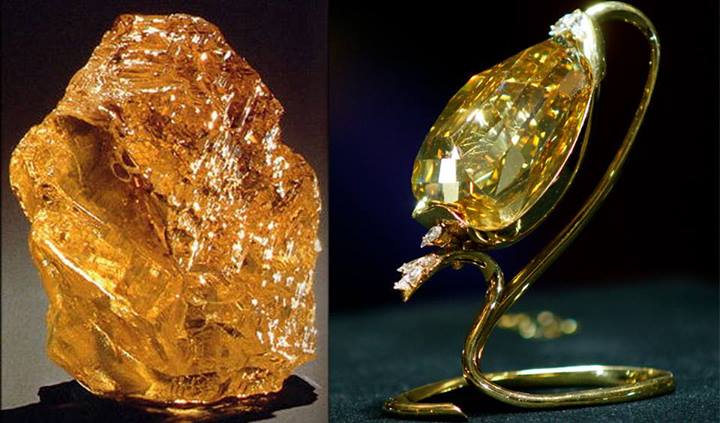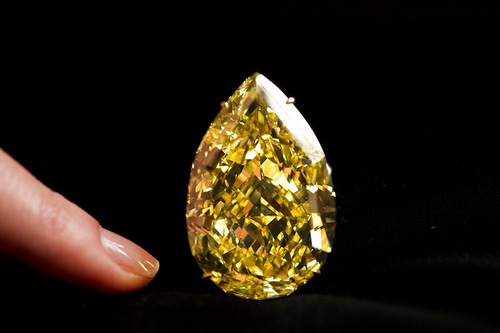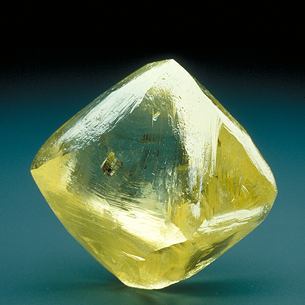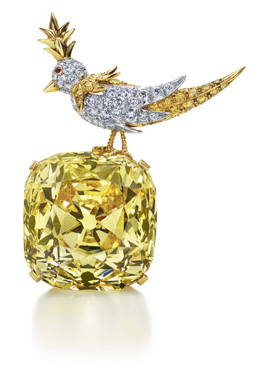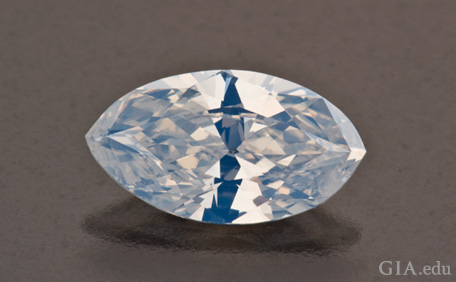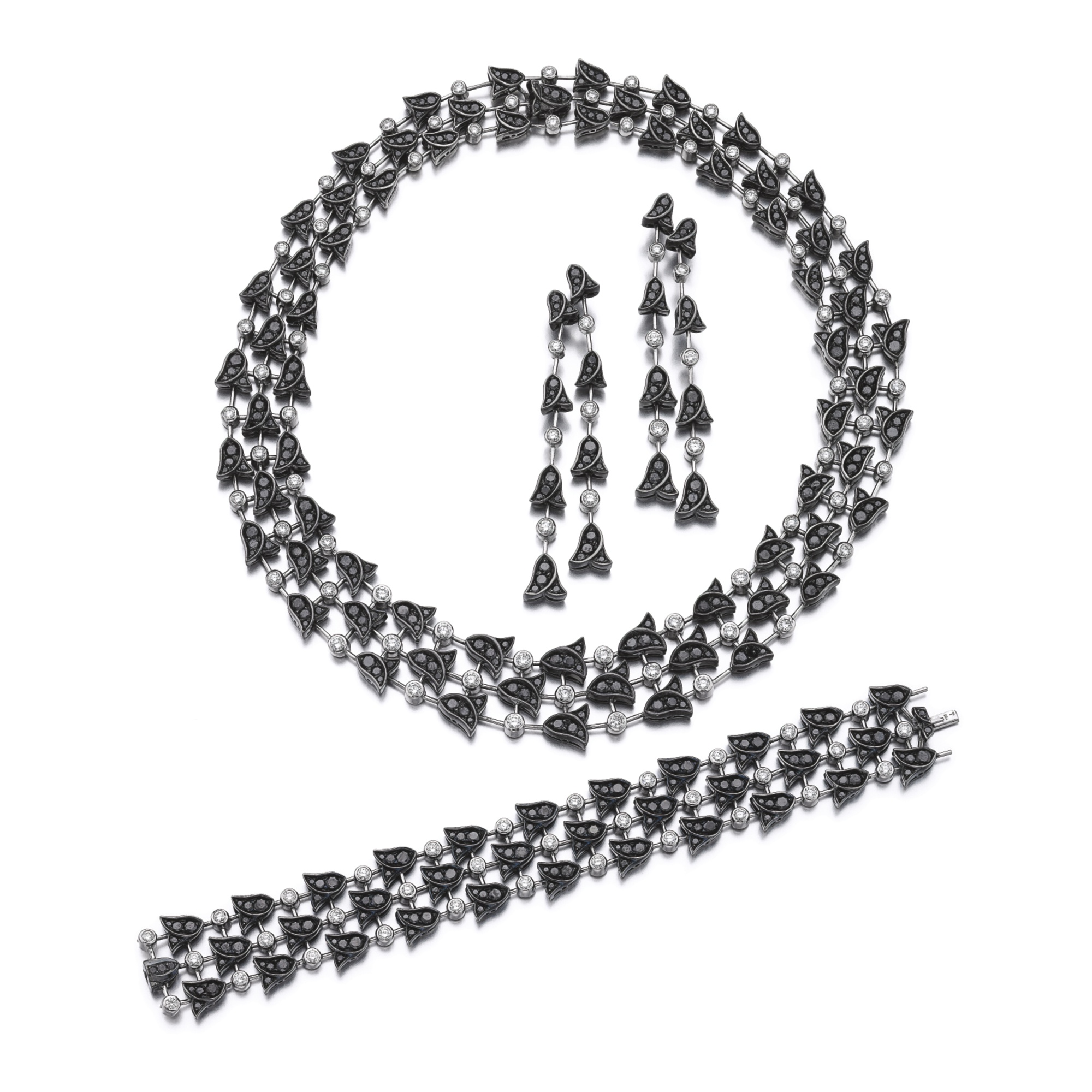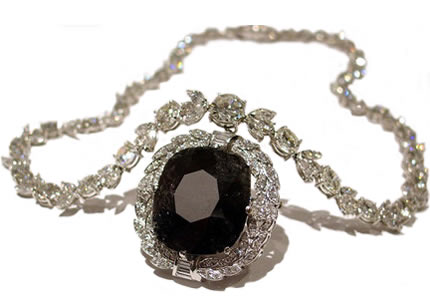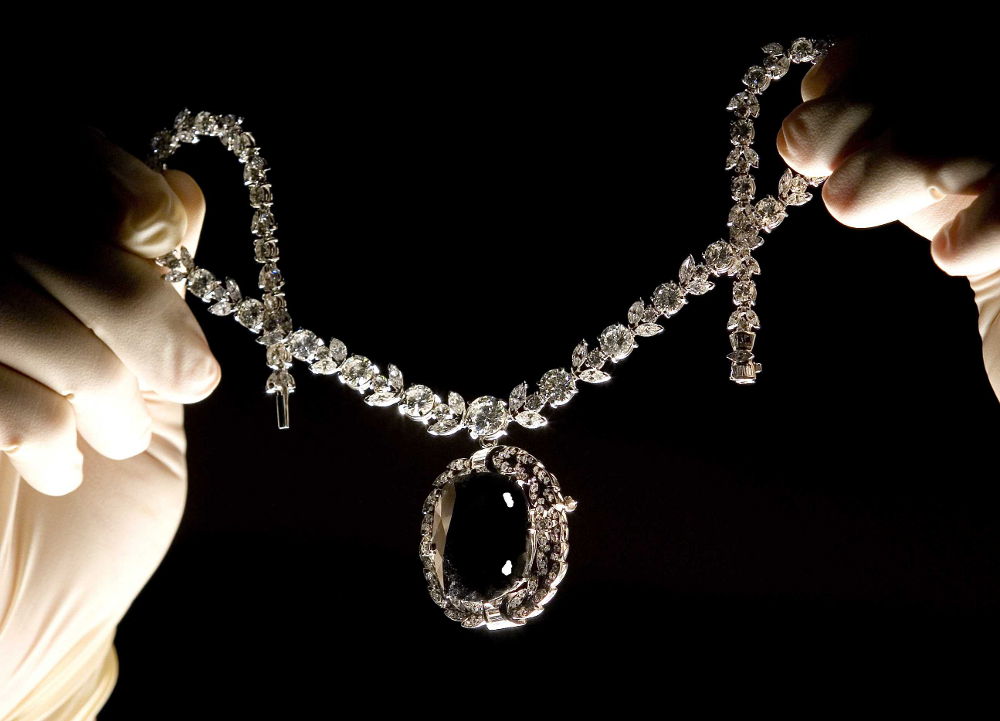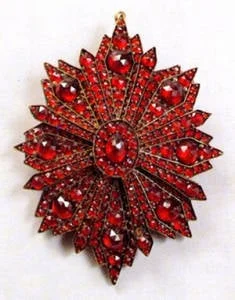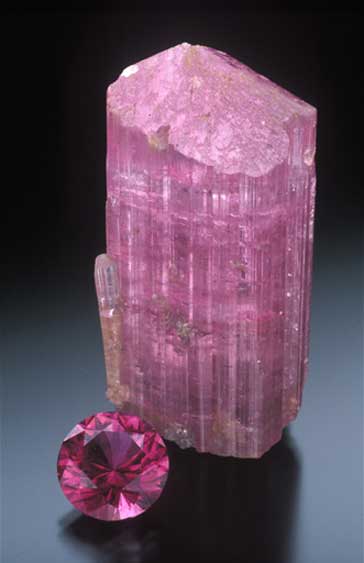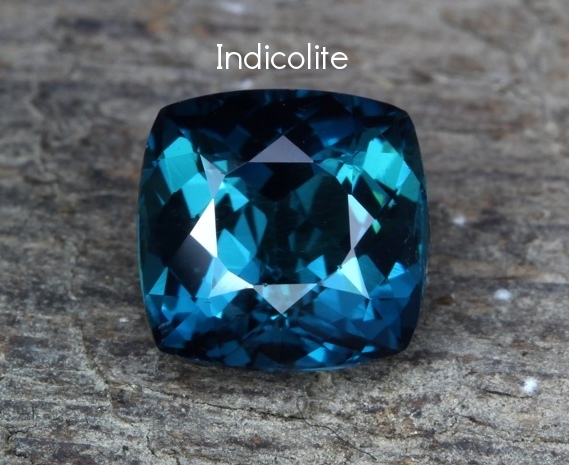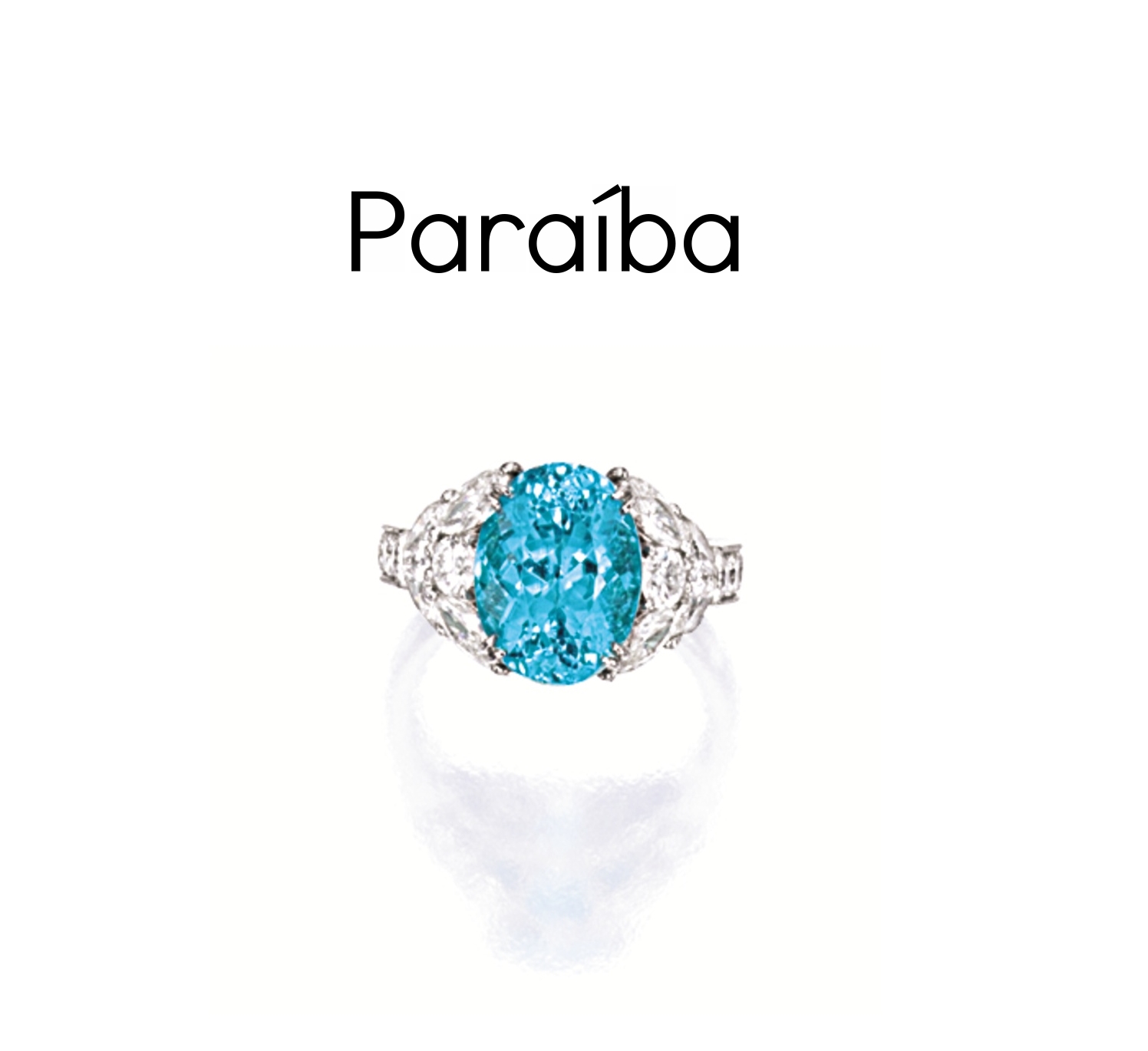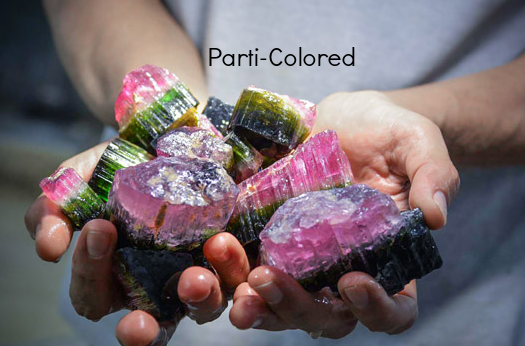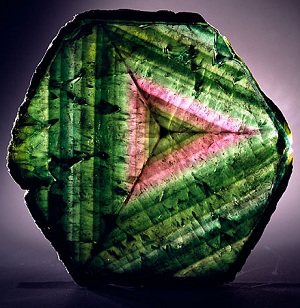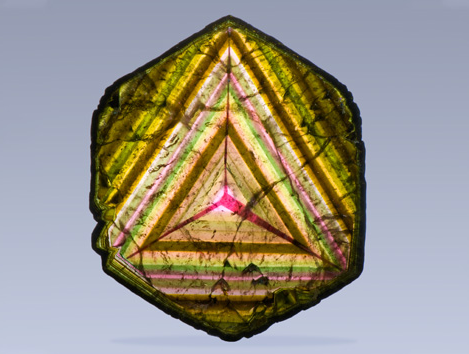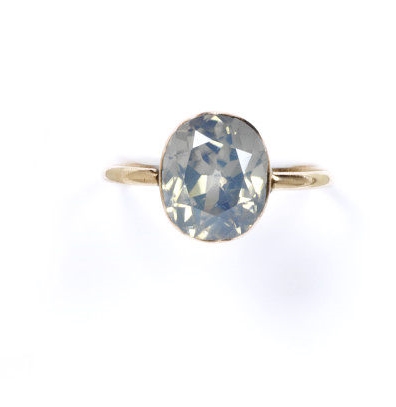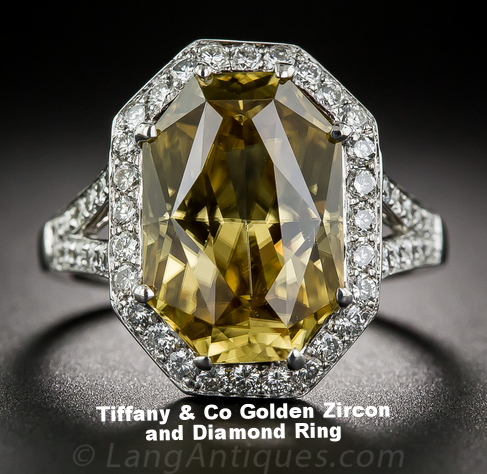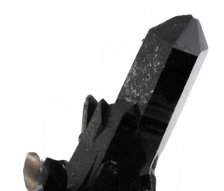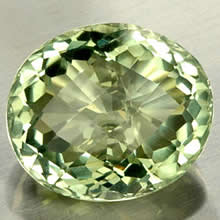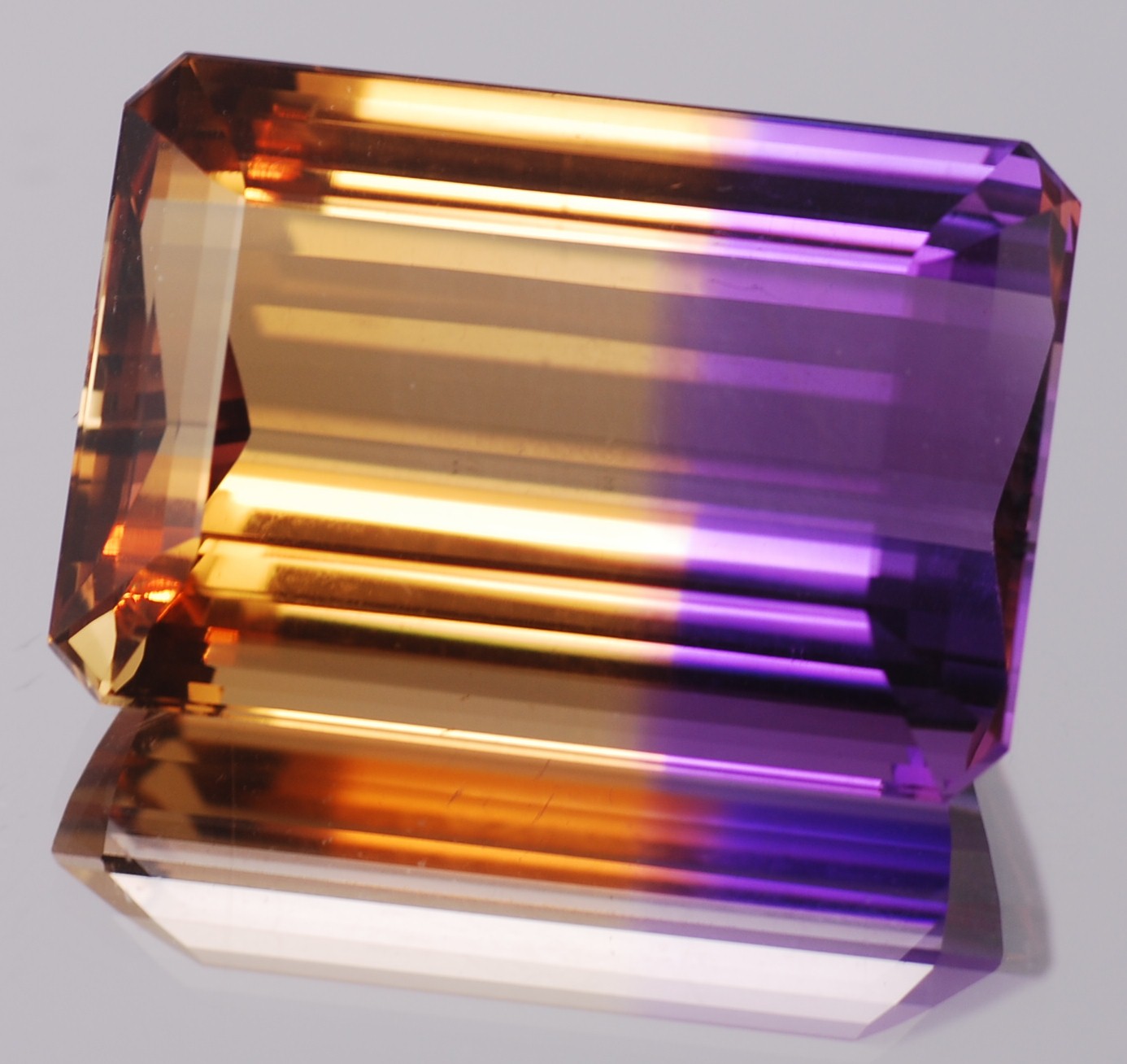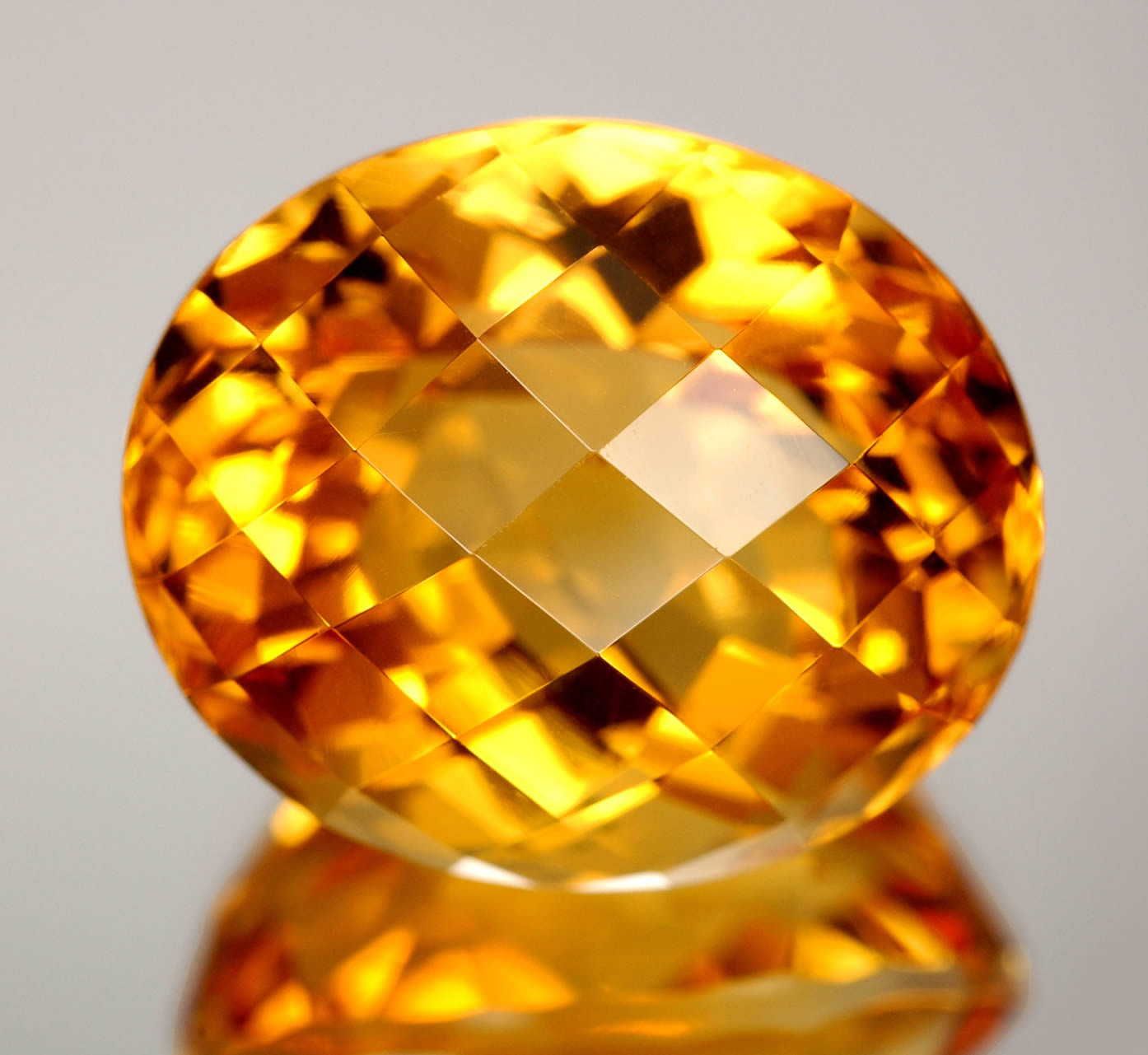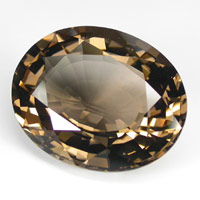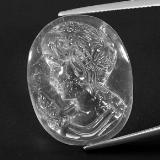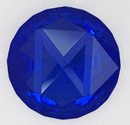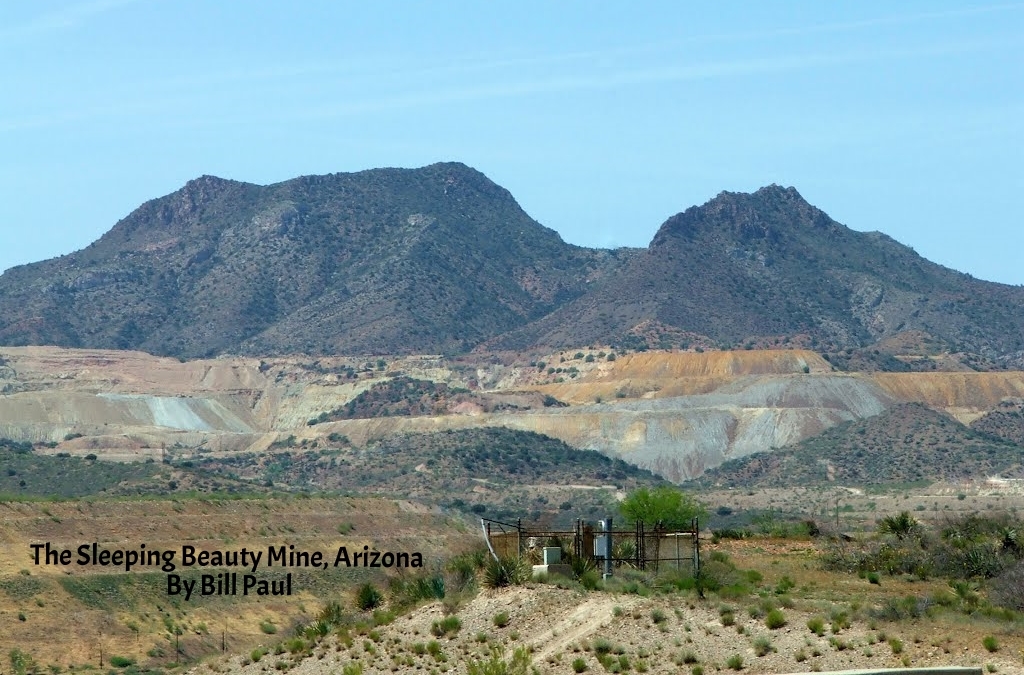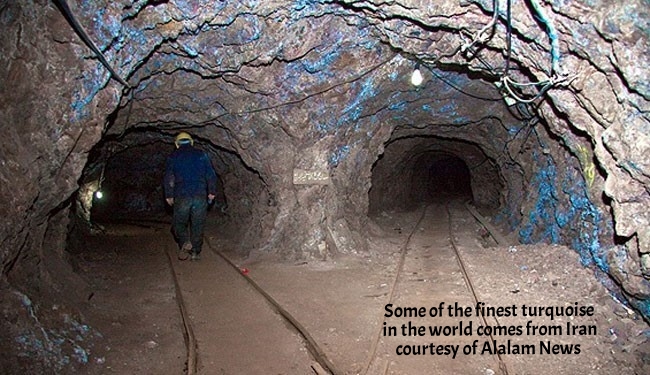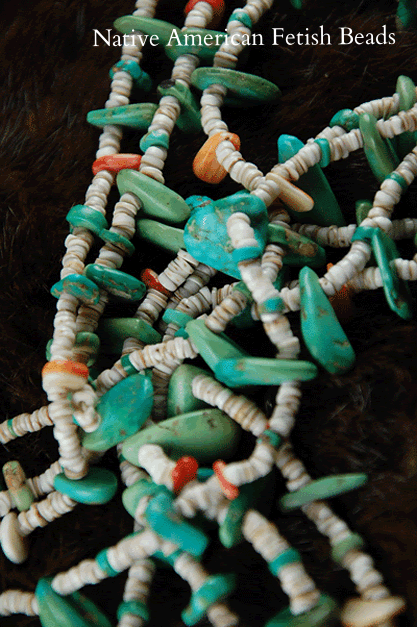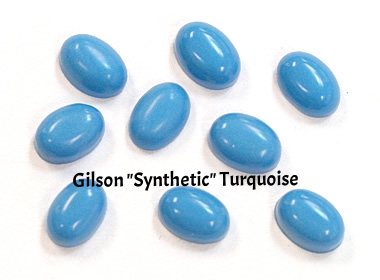The Diamond Rainbow: Fancy Colored Diamonds
/Aurora Butterfly of Peace
The colored diamonds in the Aurora Butterfly of Peace were assembled over a 12-year period by Alan Bronstein and Harry Rodman of Aurora Gems Inc., New York. The butterfly’s 240 stones show nearly the full spectrum of color and cut styles of naturally colored diamonds. - Courtesy Alan Bronstein
When diamonds are graded in what is considered the "normal" color range they are measured on a colorless through light yellow scale. This color is described using the industry standard D-to-Z color-grade scale; however, some diamonds surpass this scale and display a color beyond the Z range, or diamonds that display any other color face-up. These diamonds are what we call fancy color diamonds. These rare diamonds come in every color of the rainbow, including: blue, green, pink, and red.
HOW COLOR HAPPENS
When light enters into a diamond the stone absorbs some of the wavelengths (spectral bands) and returns the others back to our eyes. The color that we see is a combination of these unabsorbed wavelengths. For example: if little or no absorption occurs, all of the wavelengths are returned to the eye and the diamond will appear colorless; if all the colors are absorbed, we will see black.
There are two main things that influence the way a diamond absorbs light and determines its color. One is impurities: atoms other than carbon in the crystal lattice; the second is structural defects: defects include missing carbon atoms or distortions in the crystal lattice. Both impurities and structural defects affect the color you see by changing the way a diamond absorbs light.
Structural defects that cause color are called color centers. (Color centers may also be caused by a combination of structural defects and impurities.) The defect creates an opening in the crystal lattice that is then filled by the impurity element. Nitrogen is the most common element to fill these gaps, producing a yellow color. Distortions in the crystal lattice can also create color centers. For example, a strain can develop along growth lines while a crystal is forming, causing more or different light waves to be absorbed. This often produces pink and brown colors.
FANCY COLORED DIAMONDS
Fancy color diamonds are less common than diamonds in the normal range and come in almost any color you can imagine. As mentioned earlier, diamonds in the normal color range are graded on a D-Z color scale. Generally speaking the further along in the alphabet the color is the less monetary value the diamond has. This is not the case with with most fancy colored diamonds; their value increases as their color increases. Red, green, purple, and orange are generally the most rare, followed by pink and blue. Yellows and browns are the most common fancy colors, but they’re generally less valuable than the rarer colors.
Pink, Red, Purple, and Orange:
Diamonds that fall in the red ranges (red, pink, purple, orange) are extremely rare and have a premium value. In this category the more "pure" the color the higher the value. For example a true pink would be worth more than one that had a brownish, or orangey tint. The leading producer of pink diamonds is currently Australia's Argyle mine. They also produce beautiful red and purple diamonds. Pure orange diamonds (without a hint of brown) are the rarest of all the diamond colors.
The color pink is due to graining (strain) inside the diamond crystal. This distortion is believed to also cause the red color. The cause of the color orange is still somewhat of a mystery though scientists believe that it is a combination of chemical impurities and structural distortions.
The Williamson Diamond was discovered in October 1947 at the Mwadui mine in Tanganyika, owned by the Canadian geologist and royalist Dr. John Thoburn Williamson, for whom the diamond was named. The 54.5 carat uncut stone was presented by Dr Williamson as a wedding present to the (then) Princess Elizabeth in 1947. The firm of Briefel and Lemer of Clerkenwell were entrusted with cutting the diamond and subsequently turned the rough into a 23.6-carat round brilliant, a cut that was chosen to show off its rose color. Queen Mary and Princess Elizabeth made a point of visiting the Clerkenwell based firm and inspected the work of cutting and polishing of the stone on March 10th, 1948. The pink stone was set as the center of a brooch in the form of a jonquil flower (narcissus), designed by Frederick Mew of Cartier, in 1953. Dr Williamson also gifted 170 small brilliant-cut diamonds, 12 baguette-cut diamonds and 21 marquise diamonds, which were used to form the petals, stalk and the leaves of this brooch.
Green:
Fancy green diamonds are typically not intensely saturated. They are usually light in color and often have a gray or brown cast to them. Green diamonds are interesting in that their color rarely extends much below the surface of the stones. Cutters must be creative in their cutting so as to retain as much of the color as possible. You may also see an excess of natural rough on the girdle (facet that goes around the circumference of the stone) for this reason as well. Green diamonds are a product of radiation, either natural or man made. Radiation essentially displaces atoms from their normal positions in the crystal lattice. Natural green diamonds are extremely rare.
The most famous natural green diamond is the Dresden Green diamond. The diamond's first recorded purchase was in 1726 by Friedrich Augustus I (Augustus the Strong), King of Poland and Elector of Saxony. The stone was housed Dresden Palace in Germany near the river Elbe. The stone took its place in the palace's west wing in an area known as the Green Vaults, a green walled room built to house state treasures. The Dresden Green stayed in the palace for most of its recorded history save for a few times when it was relocated. One of these times saved the stone from destruction during Word War II, since most of the palace and the vaults were destroyed. Today the Dresden Green may be seen on display in Germany in the eighth room of the reconstructed Green Vaults.
Because the Dresden Green has such a long history we know for a fact that its color predates experiments with artificial irradiation (1904). This means that it is the perfect candidate for study. Analysis of the Dresden Green gave GIA research scientists the opportunity to test the criteria that they had developed to determine if a green diamond’s color is natural or treated. However, after their initial testing, scientists determined that even more research is needed to investigate the complex nature of natural green diamonds and their irradiated counterparts. Progress is slow, but work continues.
Blue:
Blue diamonds are also extremely rare. As with green diamonds they usually are not highly saturated and have a hint of gray to them. The most famous blue diamond in the world, the Hope Diamond, was graded as a Fancy Deep Grayish Blue.
The cause of the color blue in most natural blue diamonds is boron impurities. In a few rare cases blue may also be caused by natural radiation that was present when they were forming. In very rare cases hydrogen can cause a grayish blue color.
The Tavernier Blue was the original diamond from which the Blue Diamond of the French Crown (aka the French Blue), and eventually the Hope Diamond would come. In 2005 historians and gemologists scientifically proved that this stone was 115.16 carats and a Type IIb (boron containing diamond).
The stone was originally described by 17th century gemstone trader and traveler Jean-Baptiste Tavernier. He described the stone as "violet" in color and possessing of perfect clarity. Taverneir frequented India in search of gemstones for trade, so it is not a stretch to assume that his documented accounts of the diamond having an Indian origin are true. The stone then ended up in the hands of Louis XIV of France. The Tavernier Blue was re-cut by court jeweler Jean Pitau into the 68-carat French Blue which the king had set on a cravat-pin.
In 1749 Louis XIV's great-grandson, King Louis XV, had the French Blue set into a more elaborate pendant for the Order of the Golden Fleece. The piece created by court jeweler André Jacquemin included a 107 carat red spinel dragon. In 1792, during the tumultuous times of the French Revolution the stone was stolen from the French Crown. The stone then reemerged having been cut into the 45.52 carat Hope Diamond in an attempt to veil its identity. After a long history that includes the stone traveling far and wide the Hope diamond finally came to rest at the Smithsonian Institution where it can be seen on display.
Another prized blue diamond is rumored to have been taken from the Tavernier. This stone was originally set as a ring for Empress Maria Feodorovna, wife of Russian Emperor Paul I. It was given to the State Diamond Fund in 1860 by her daughter-in-law, the Empress Alexandra Feodorovna. The diamond was mounted into a stickpin. Currently the 7.50 carat stone is preserved in the collection of the Alexander Palace in Tsarskoye Selo, Russia. The provenance of this Russian stone is still disputed.
Brown:
Brown is the most common of the fancy colored diamonds, it has also been one of the least popular color of diamonds in recent times. This is because brown diamonds have been typically seen as "impure" (sometimes mistakenly thought to be colored by inclusions) and considered to only be good for industrial uses. Brown diamonds are in fact no more "impure" than pink diamonds. Both owe their color to internal graining (strain). If there is also nitrogen present then the stone will have a brownish yellow color.
In the 1980's brown diamonds were being found in abundance at the Argyle mine. In an attempt to stir public interest they gave the various colors descriptive names like "cognac" and "champagne." Brown diamonds range in colors from very light to very dark, and many have modifying tones of yellow, orange, or red. Today brown diamonds are available in high end jewelry as well as more commercial products.
At 407.48 carats, the fancy brownish yellow diamond, internally flawless (IF) Incomparable Diamond is the 3rd largest faceted diamond in the world. The name Incomparable was given to this diamond by its owners, the Zales Corporation (a Dallas, Texas based jewelry store chain) who initially purchased the enormous 890 carats rough diamond from De Beers. The diamond was displayed for the world in November 1984, to coincide with the 75th anniversary of the Zale Corporaion. The cut of the diamond is described as a shield-shaped step cut. The diamond was also put on display at the Smithsonian Institute's Natural History wing. The stone was put up for auction twice but failed to sell. It is believed to be currently held by a private individual.
Yellow:
Yellow is the second most common of the fancy colored diamonds. The color in yellow diamonds is usually the result of the presence of nitrogen, though some brownish yellow diamonds have also been found to contain hydrogen. A common descriptive sales term for bright yellow diamonds is "canary".
The Cora Sun-Drop Diamond is the largest known yellow pear-shaped diamond, weighing 110.3 carats. It was sold for $10.9 million at Sotheby’s auction in Geneva and set a world record price for a yellow diamond. It was found in South Africa in 2010 within a kimberlite pipe. Tests show that the diamond was formed between 1 and 3 billion years ago. Nitrogen impurities in the carbon crystal structure give the diamond its yellow color as they modify light, absorbing the blue part of the visible spectrum.
The stone was cut by New York based Cora International. The Sun-Drop was unveiled to the world at London’s Natural History Museum where it was exhibited in the famous ‘Vault Gallery’ from February through August 2011. In November 2011, it was sold at an auction to an anonymous phone bidder.
The Oppenheimer Diamond is one of the most famous and largest uncut diamonds in the world. The stone is a nearly perfectly formed octahedron crystal weighing 253.7 carats. It was discovered in the Dutoitspan Mine, Kimberley, South Africa, in 1964. The stone was acquired by Harry Winston who presented it to the Smithsonian Institution in memory of Sir Ernest Oppenheimer.
The Tiffany Yellow Diamond is one of the largest yellow diamonds ever discovered. The rough stone from which it was cut weighed 287.42 carats. The Tiffany Yellow was discovered in 1878 in the Kimberley mine in South Africa. The stone was purchased by New York jeweler Charles Tiffany. His gemologist, George Frederick Kunz, studied the gem for a year before it was cut. When cutting was finished the now cushion shape weighed 128.54 carats. The yellow stone was later set by Tiffany designer Jean Schlumberger in its current setting "Bird on the Rock".
The diamond is known to have been worn by only two women: Mrs. Sheldon Whitehouse at the 1957 Tiffany Ball held in Newport, Rhode Island wore it mounted for the occasion in a necklace of white diamonds, and Audrey Hepburn in 1961 publicity photographs for the film Breakfast at Tiffany's.
White & Black:
As opposed to "white" diamonds in the normal color range fancy white diamonds have a milky white color appearance. This milky almost opalescent look is caused by submicrscopic inclusions that scatter the light entering the stone.
Black diamonds did not see popularity until the 1990's. Most black diamonds end up as industrial grit since they are usually heavily knotted crystals or an aggregate that is nearly impossible to cut. When they are seen, they are usually small melee accent stones in pave settings. One noteable exception is the Black Orlov diamond.
The Black Orlov is a 67.50 carats black diamond that is supposedly named after the Russian royal family. The diamond is believed to have originally weighed 195 carats and to have been discovered in early 19th century in India. The myth surrounding the diamond says that it was supposedly one of the eyes in a statue of the Hindu god Brahma, until it was stolen by a monk. The theft then supposedly left the diamond cursed. This curse is said to have led to the suicide of diamond dealer J. W. Paris in 1932 who is said to have jumped from a skyscraper in New York City. The "curse" continued with the stone's later owners Russian princesses Leonila Galitsine-Bariatinsky and Nadia Vygin-Orlov (after whom the diamond is named). Both women are rumored to have jumped to their deaths in the 1940's. The diamond was later bought by Charles F. Winson who cut the stone into three pieces (legend says that it was done in an attempt to break the curse). One of the pieces is the 67.5 carat Black Orlov. The Black Orlov was set into a brooch surrounded by white diamonds and suspended from a necklace of more white diamonds. The diamond was then purchased by diamond dealer Dennis Petimezas in 2004; Petimezas told The Guardian in 2011 that he was "pretty confident that the curse is broken". The Black Orlov has been displayed at the American Museum of Natural History in New York City and the Natural History Museum in London.

